Day 1 Wrap-Up: SIEW 2025 Kicks Off with a Bold Vision for Tomorrow’s Energy Systems
On the opening day of Singapore International Energy Week (SIEW) 2025, H.E. Dr Tan See Leng, Minister for Manpower and Minister-in-Charge of Energy, Science & Technology, Ministry of Trade and Industry, delivered the Singapore Energy Lecture—outlining a new chapter in Singapore’s energy story shaped by system building, regional partnerships, and human capability.
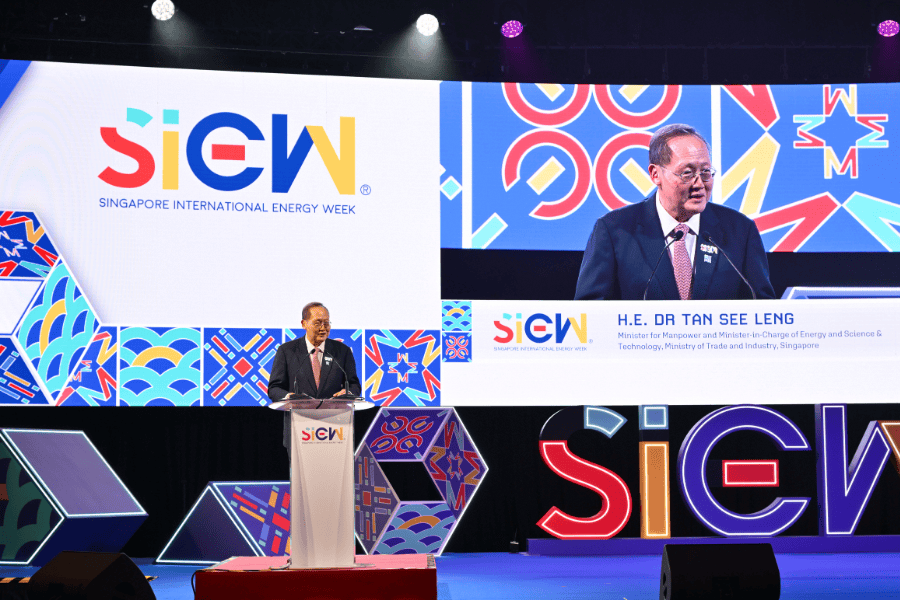
Here's a recap of Day 1's key announcements and highlights:
How is your SIEW 2025 experience thus far? Share your thoughts with us by taking a quick survey!
Stay tuned as the conversation evolves throughout the day. Follow @SIEW_sg on Telegram and X (formerly Twitter) for the latest insights.
SIEW Summit: Scaling up Future-Ready Low-Carbon Energy Solutions
At the SIEW Summit session "The Next Energy Breakthrough: Scaling Future Energy Technologies”, industry experts explored how innovation, collaboration, and policies are pivotal to accelerating the energy transition.
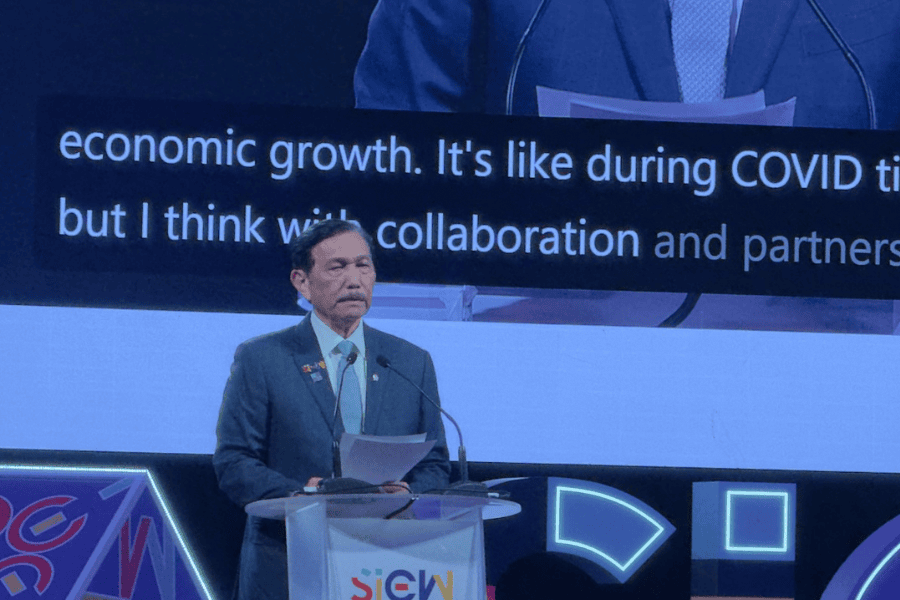
Before the session, General (Ret.) Luhut Binsar Pandjaitan, Chairman of the National Economic Council, Republic of Indonesia, delivered his keynote calling for stronger regional cooperation. He shared Indonesia’s strategic roadmap toward sustainable growth and digital transformation.
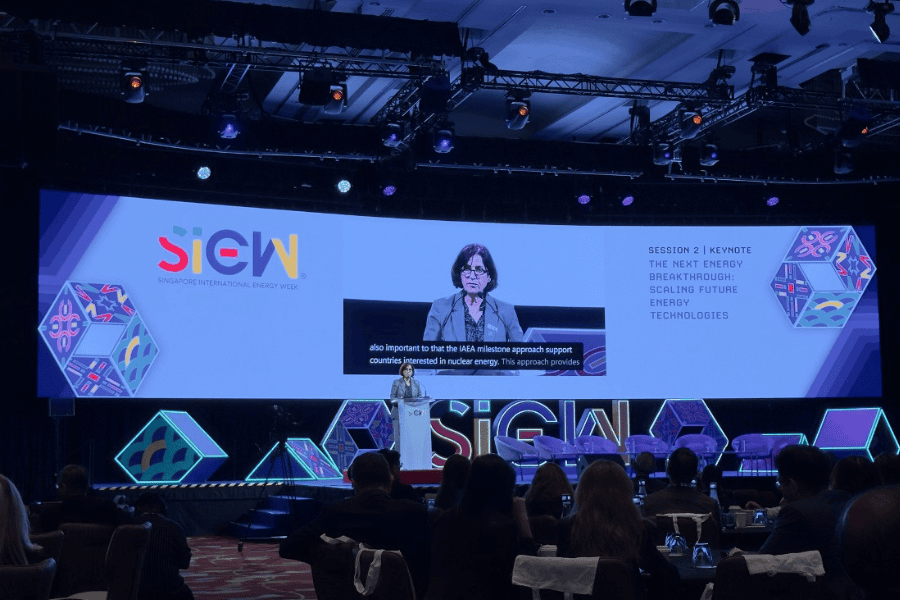
The panel session put the spotlight on technologies shaping the next generation of clean energy—including carbon capture and storage (CCS), nuclear, renewables, and hydrogen—and how policies, financing, and cross-border partnerships will be crucial to scaling these solutions globally.
Nuclear is one of the key energy breakthroughs discussed in the session. Karine Herviou, Deputy Director General and Head of the Department of Nuclear Safety and Security, International Atomic Energy Agency (IAEA), highlighted the potential of small modular reactors (SMRs) in scaling up clean and reliable systems. She further shared how the IAEA’s initiatives are helping countries evaluate and develop nuclear programmes that meet global safety, security, and transparency standards.
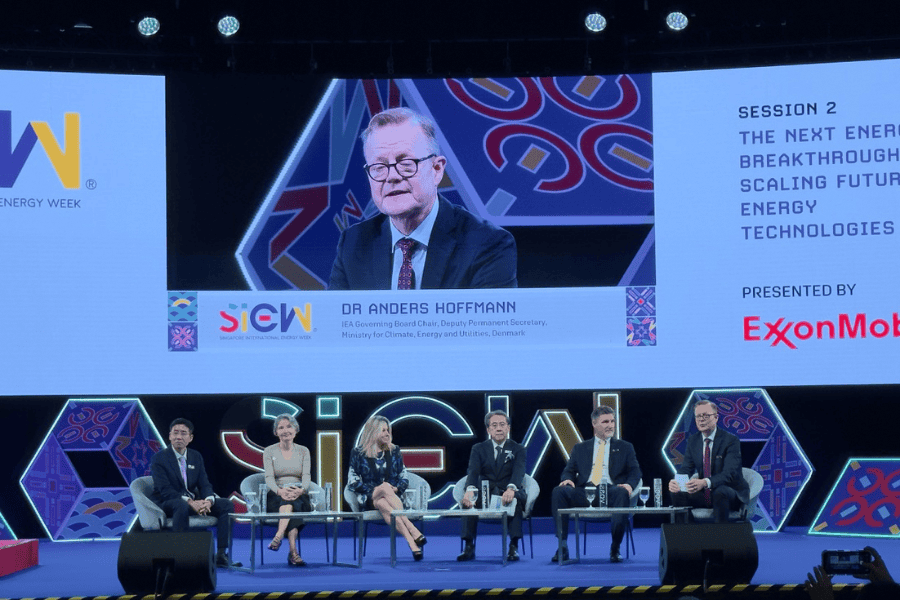
Moderated by Dr Anders Hoffmann, IEA Governing Board Chair and Deputy Permanent Secretary of Denmark’s Ministry for Climate, Energy and Utilities, the panel discussion brought together Dominic Genetti, Senior Vice President, Carbon Capture and Storage, ExxonMobil Low Carbon Solutions; Tadashi Maeda, Chairman of the Board, Japan Bank for International Cooperation (JBIC); Dr Sama Bilbao y León, Director General, World Nuclear Association; Helle Kristoffersen, President Asia and Member of the Executive Committee, TotalEnergies; and Yaoyu Zhang, Assistant CEO and Global Head of LNG Trading and New Energies, PetroChina International, to discuss:
- Low-carbon developments: CCS will remain essential beyond 2050 to decarbonise hard-to-abate sectors. Panellists stressed the need for unified carbon accounting frameworks and policy incentives to reduce costs and enable regional CCS hubs across Asia.
- Diversification of the energy mix: Panellists also called for long-term investment frameworks and regional cooperation to drive future-ready energy solutions, by combining renewables, gas, nuclear and hydrogen.
Stay tuned as the conversation evolves throughout the day. Follow @SIEW_sg on Telegram and X (formerly Twitter) for the latest insights.
Balancing Energy Transition and Security in an Interconnected Asia
By Keethanna Jeyaseelan, EMA
In a SIEW Summit fireside chat, leaders from GE Vernova and Aramco shared how technology and collaboration are shaping a more secure, connected energy transition. Singapore remains at the heart of Asia's evolving energy landscape.
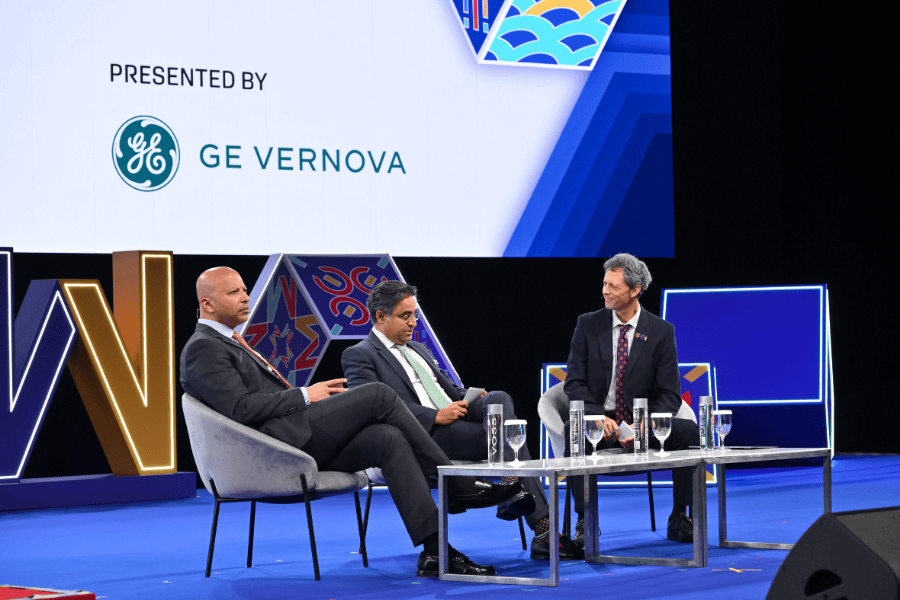
The session was moderated by Dr Roger Fouquet, Principal Research Fellow, Energy Studies Institute (ESI), and featured Nomi Ahmad, Chief Executive Officer, Financial Services, GE Vernova, and Yasser M. Mufti, Executive Vice President, Products and Customers, Aramco.
- Asia's energy future lies in balancing the energy transition and security. Speakers agreed that decarbonisation must advance alongside stable and affordable energy supply to support resilient progress.
- Technology and data are redefining how the world powers progress. Artificial intelligence, digitalisation, and efficiency-driven innovation are helping optimise systems and accelerate electrification across sectors.
- Singapore remains a catalyst for regional energy integration. Its progressive policies, investment climate, and strategic location make it a vital connector in ASEAN's low-carbon transition.
- Financing the transition demands stronger shared commitment. Capital is available, but effective public–private partnerships and clear policy frameworks are key to aligning risk, opportunity, and investment at scale.
- Flexibility will anchor tomorrow's resilient energy systems. Adaptive and responsive energy markets are essential to sustain security and growth as technologies evolve and global demand rises.
Stay tuned as the conversation evolves throughout the day. Follow @SIEW_sg on Telegram and X (formerly Twitter) for the latest insights.
SIEW Summit: Policy and Finance Bridges to Asia's Clean Future
By Jeremy Yap, EMA
In SIEW Summit Session 1: Envisioning Asia's Energy Future, experts outlined how policy reform and new financing approaches can power Asia's clean future. They also highlighted the importance of strengthening regional resilience.
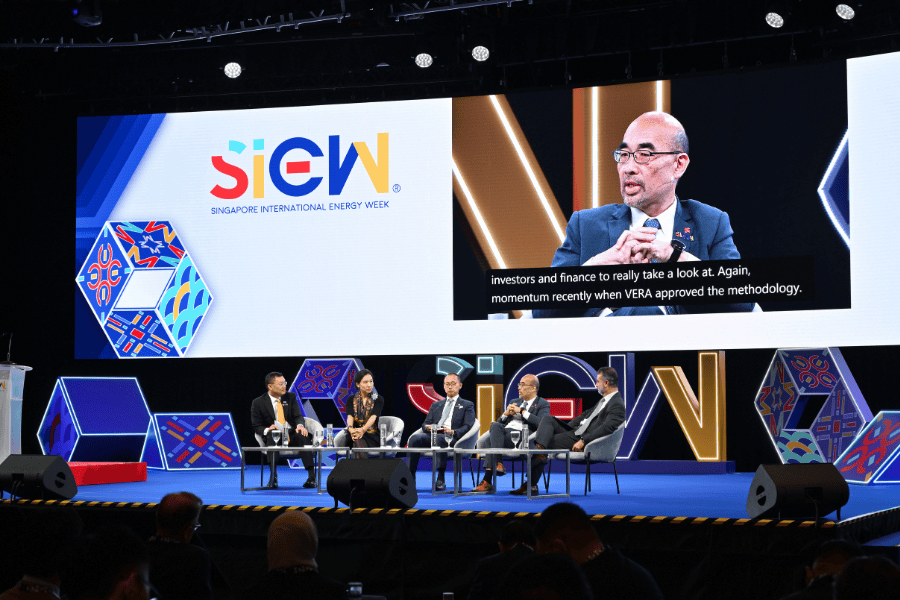
Panellists for the session included H.E. Eddy Soeparno, People's Consultative Assembly Vice Speaker, Indonesia; Lin Yang, Deputy Executive Secretary for Programme, Economic and Social Commission for Asia and the Pacific (ESCAP); Charles Koh, Acting Chief Operating Officer, Platform Founder, GoNetZero, Sembcorp; and Lim Wee Seng, Group Head of Sustainability, Energy, Renewables & Infrastructure, Project Finance and Strategic Advisory, Institutional Banking Group, DBS Bank. The moderator was Gurbuz Gonul, Director, Country Engagement & Partnerships, International Renewable Energy Agency (IRENA).
- Building bridges to net zero requires both technology and capital. Asia must strengthen its grids, develop ancillary services, and use innovative financing to create flexible, reliable systems for growth.
- Predictable policies and regional interconnection are vital to attract private investment and enable research and innovation. They also help create efficient, integrated energy markets across Asia.
- Asia's clean energy shift should help reduce energy poverty, create jobs, and support green industrialisation. Building resilience ensures the transition benefits all communities.
- Public-private partnerships and financing innovation will determine Asia's transition success. Mobilising private capital is vital to meeting the region's US$1.5 trillion infrastructure needs.
Stay tuned as the conversation evolves throughout the day. Follow @SIEW_sg on Telegram and X (formerly Twitter) for the latest insights.
SIEW Ministerial Dialogue: Strategies to Build Resilient, Interconnected Energy Systems
Contributed by Lee Mian Rong, EMA
Held during SIEW Summit, the SIEW Ministerial Dialogue explored strategies for building secure, resilient, and people-centred energy systems in the ASEAN region: with a focus on regional power integration, infrastructure investment, renewable energy developments, and emerging technologies like hydrogen.
Moderated by Puah Kok Keong, Chief Executive, Energy Market Authority (EMA), the dialogue featured H.E. Sharon S. Garin, Secretary, Department of Energy, Republic of the Philippines; Hon Stephen Dawson MLC, Minister for Regional Development; Ports; Science and Innovation; Medical Research; and Kimberley Region, Western Australia; and Francesco La Camera, Director-General, International Renewable Energy Agency (IRENA). The panellists outlined the importance of progressive policies and innovative financial mechanisms to drive a successful and sustainable energy transition.
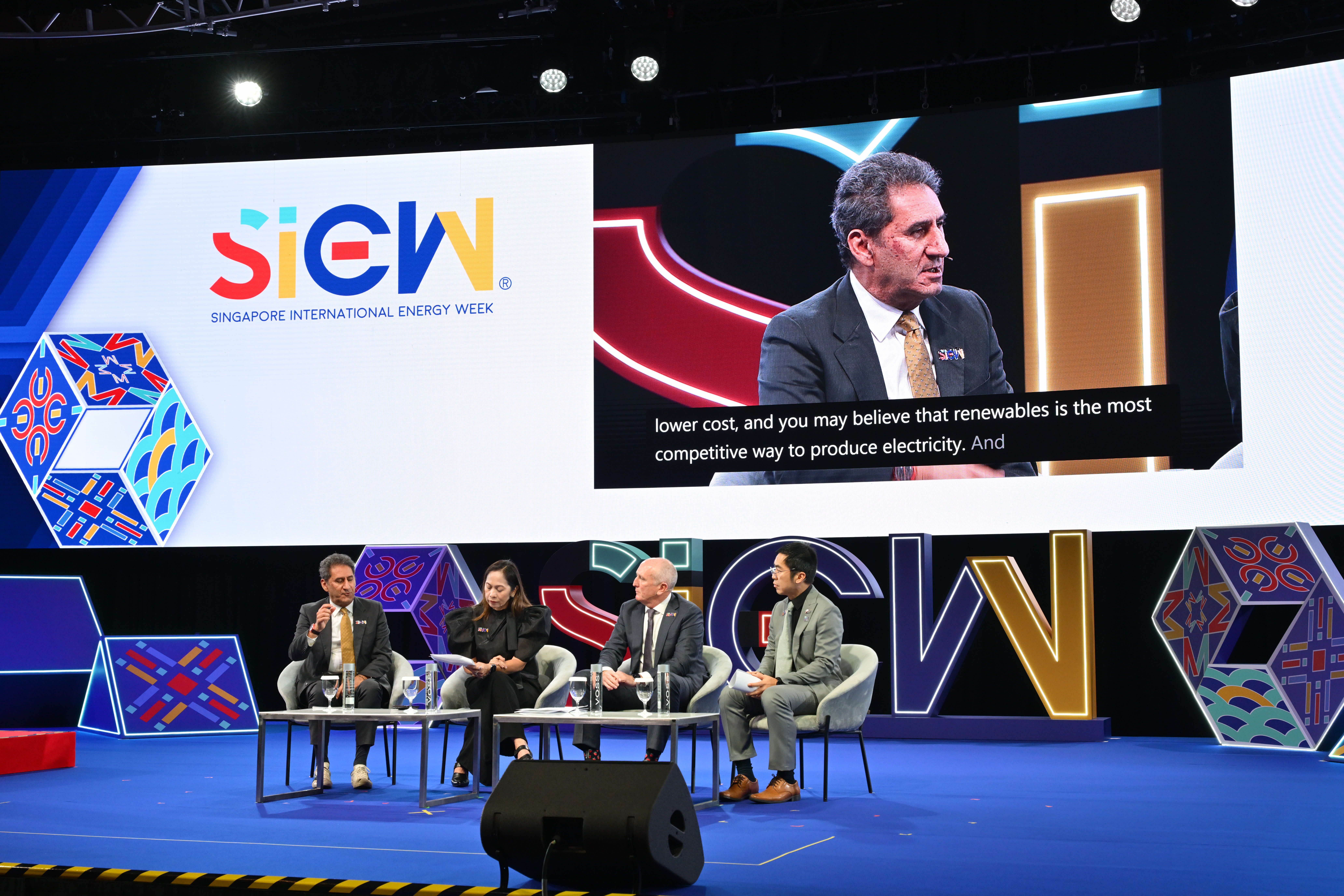
Highlights from the dialogue include:
- H.E. Garin emphasised that blended financing is critical to reducing risks and ensuring affordable electricity in the Philippines’ market-driven energy sector.
- On balancing the use of renewable energy with system reliability, Mr La Camera highlighted that building robust infrastructure is the solution to managing intermittency in power systems.
- On Western Australia’s strategies to develop the hydrogen sector, Hon Dawson underlined that although hydrogen technology is costly at first, investing in it is crucial for achieving decarbonisation goals. Western Australia is focusing on creating a strong environment for industry investment in hydrogen. If successful, these efforts will benefit both Australia and the broader ASEAN region.
- H.E. Garin shared her views that progressive, adaptive policies are vital for advancing renewable energy in the Philippines and ASEAN. Echoing her point, Hon Dawson highlighted that governments should set clear and consistent policies to give the industry confidence to invest and create strong partnerships.
- Ending off the session, Mr La Camera emphasised that it is critical to shift from legal frameworks and energy markets systems designed for fossil fuels, to an energy system that supports the growth of renewables.
Stay tuned as the conversation evolves throughout the day. Follow @SIEW_sg on Telegram and X (formerly Twitter) for the latest insights.
SIEW Summit: Diversified Energy Systems Key to a Resilient Future
Contributed by Lee Mian Rong, EMA
Energy leaders at the SIEW Summit underscored the importance of diversifying energy sources and strengthening grids to build resilient power systems for the future.
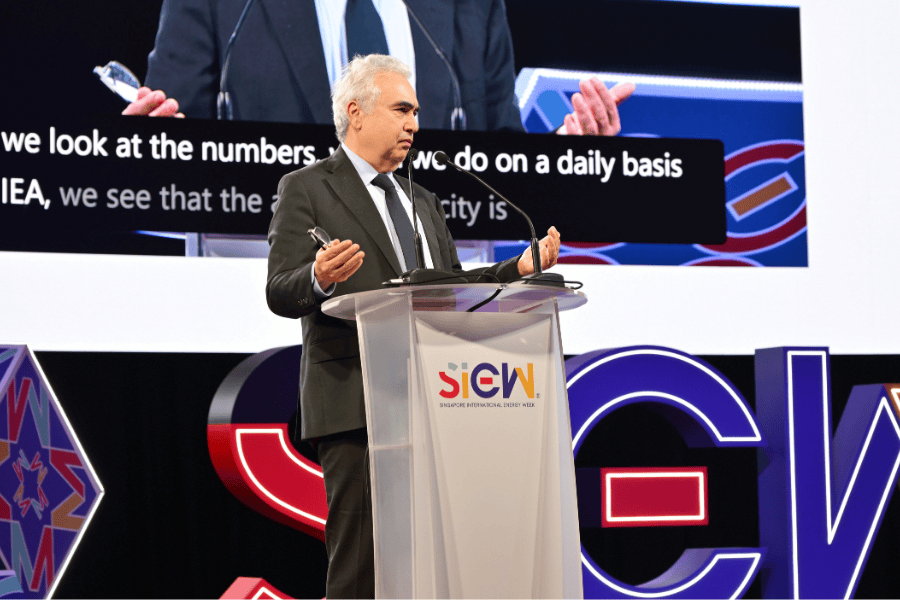
Dr Fatih Birol, Executive Director of the International Energy Agency (IEA) shared his views on how countries can ensure energy security in the face of growing global electricity demand—driven growth in data centres, artificial intelligence, electric vehicles, and cooling needs. Flexible and reliable power systems are more critical than ever.
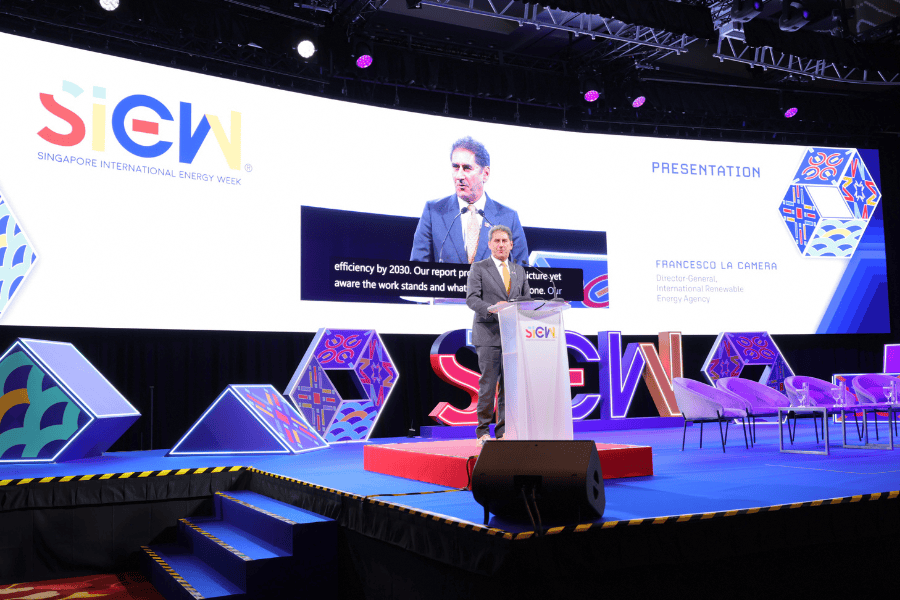
In his presentation, Francesco La Camera, Director-General, International Renewable Energy Agency (IRENA), said distributed energy systems can shape the next phase of the transition. Combining renewables with hydrogen, biomass, and other sustainable fuels enhances flexibility, resilience, and shared progress towards a secure energy future.
According to Mr La Camera, annual investment in renewables will need to more than double to meet 2030 climate and energy targets. Stronger public-private financing and regional cooperation can help scale deployment and sustain progress in the transition.
Stay tuned as the conversation evolves throughout the day. Follow @SIEW_sg on Telegram and X (formerly Twitter) for the latest insights.
Singapore Embarks on New Chapter to Build Tomorrow's Energy Systems Today
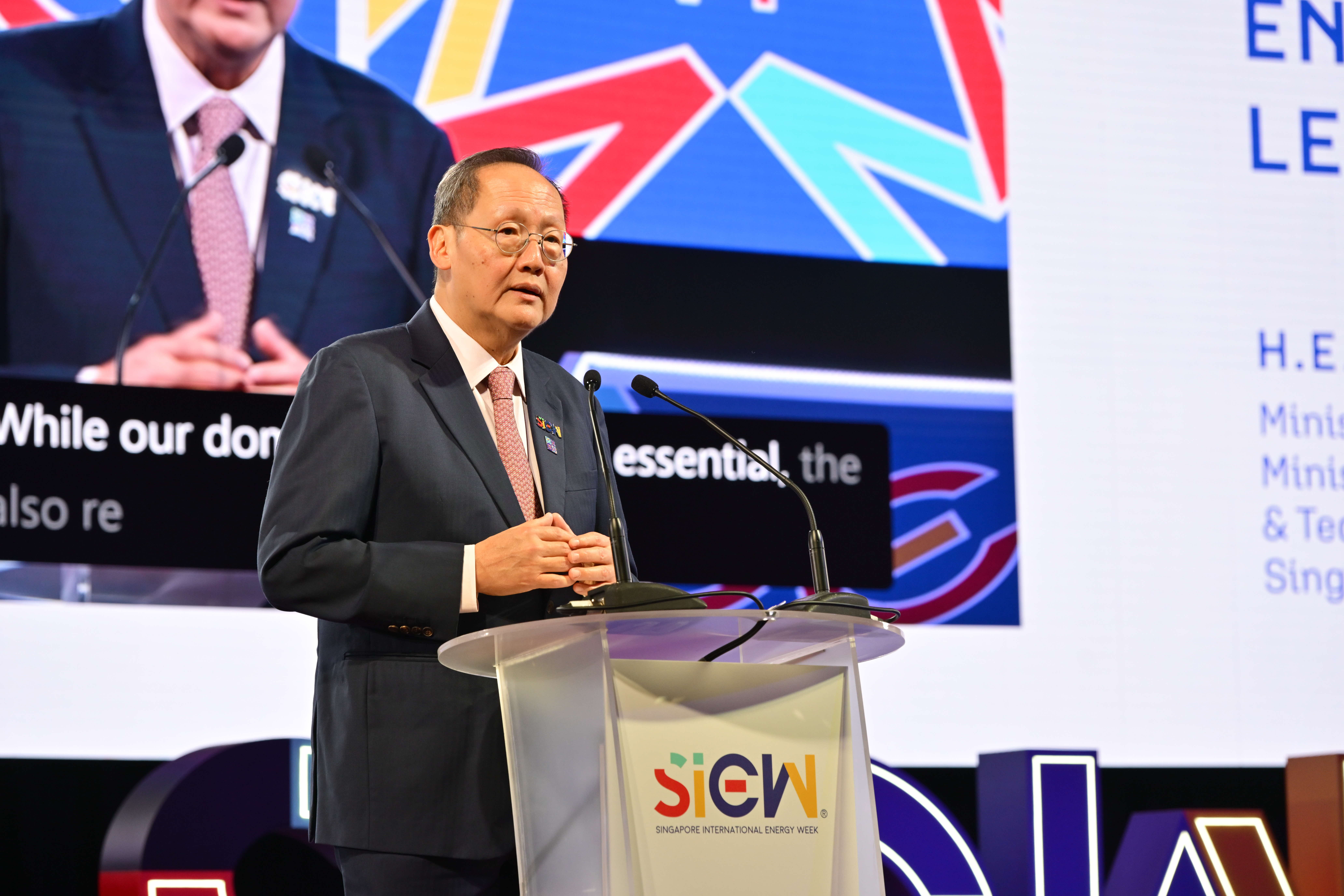
The 18th Singapore International Energy Week (SIEW) opened with a clear message of collaboration and foresight.
In his welcome remarks, Puah Kok Keong, Chief Executive, Energy Market Authority (EMA), called on the global energy community to embrace the energy transformation with vision, investment, and collective resolve.
Dr Tan See Leng, Minister for Manpower and Minister-in-Charge of Energy, Science & Technology, Ministry of Trade and Industry, linked Singapore's next energy chapter to SG60. This new chapter is guided by four pillars: Sustainable pathways, Interconnectivity, Ecosystem resilience, and Workforce capabilities.
Together, their messages reflected Singapore's pragmatic approach to 'Envisioning Energy Tomorrow, Building Systems Today', this year's SIEW theme. Read More
SIEW Summit: Strengthening Global Partnerships on Clean Energy Solutions
During the SIEW Summit, high-level officials from the U.S. and the International Atomic Energy Agency (IAEA) outlined a shared commitment to advancing a sustainable and resilient energy future through partnerships and cutting-edge technologies.
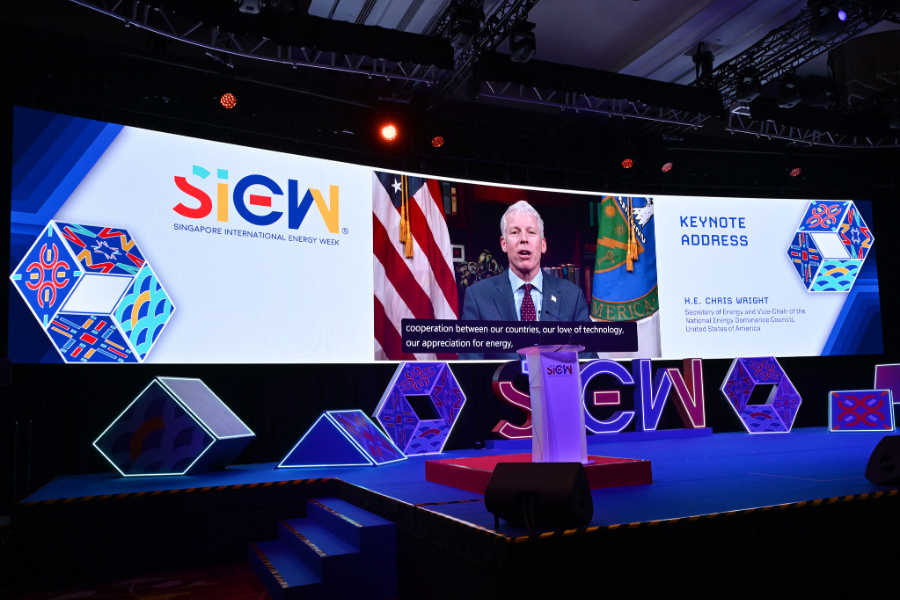
In his Keynote Address, H.E. Chris Wright, Secretary of Energy and Vice-Chair of the National Energy Dominance Council, United States of America, highlighted the longstanding energy partnership between the U.S. and Singapore. He spoke about how the U.S. is uniquely positioned as a strategic partner: both in terms of supplying LNG to meet Singapore’s evolving energy needs, and as an innovation leader in nuclear energy.
Forging new partnerships in nuclear technologies
H.E. Wright reinforced the ongoing partnership between the two nations as Singapore continue to explore next-generation nuclear technologies, particularly small modular reactors (SMRs). Highlighting the compact footprint and high energy density of SMRs, he noted that several American firms are at the forefront of this innovation—offering a diverse range of solutions for Singapore to evaluate.
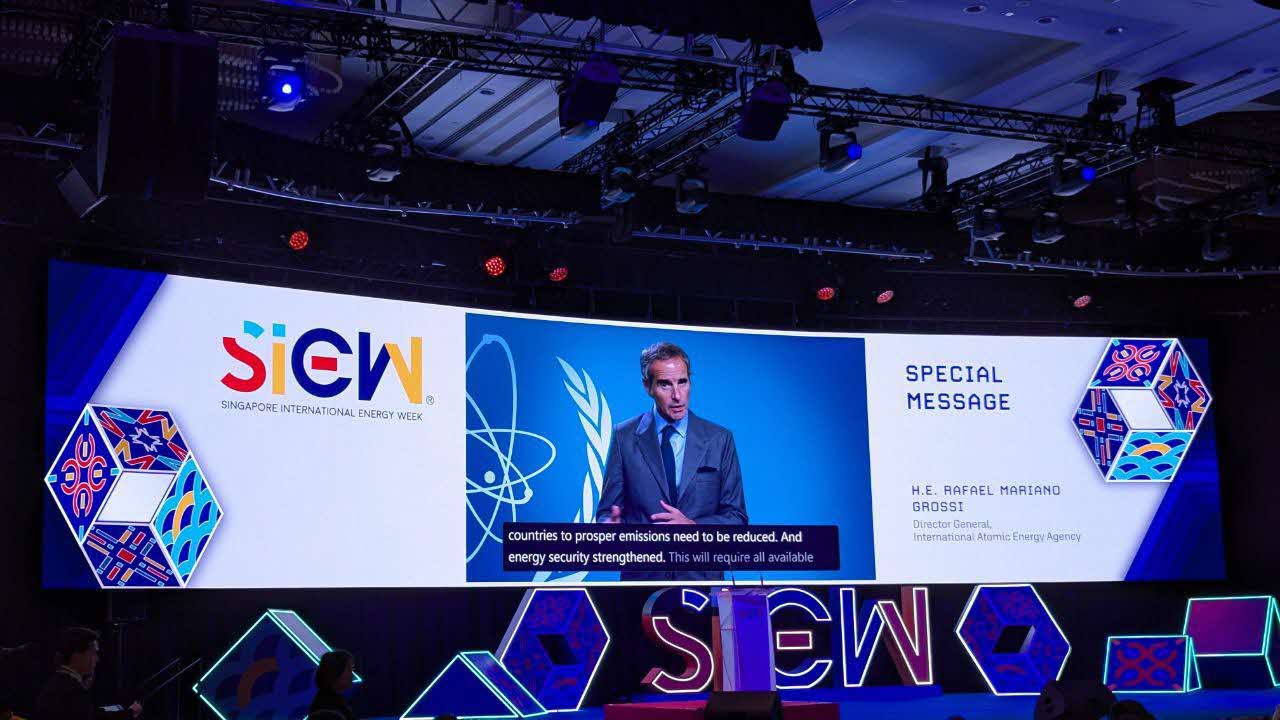
In his Remarks, H.E. Rafael Mariano Grossi, Director General, IAEA, highlighted the growing potential of SMRs to deliver reliable electricity across a range of applications—from powering AI data centres and fuelling cargo ships in Southeast Asia to supporting water desalination use cases.
H.E. Grossi reiterated IAEA’s partnership with Southeast Asian countries as they consider the role of nuclear power in their energy mix, especially in providing expertise, safety and security frameworks, and support in skills development.
Both leaders agreed that collaboration and innovation will be key to building cleaner, more stable energy systems amidst a backdrop of rising demands.
Stay tuned as the conversation evolves throughout the day. Follow @SIEW_sg on Telegram and X (formerly Twitter) for the latest insights.
SG60@SIEW Energy Showcase: Envisioning Singapore's Energy Future
Launched at SIEW 2025, the SG60@SIEW Energy Showcase charts Singapore’s energy journey towards 2065, as the country decarbonises the power sector. From solar power and regional grids to energy storage systems, nuclear energy, digitalisation, and low-carbon solutions, the Showcase brings to life how innovation, technology, and collaboration are shaping our energy future.
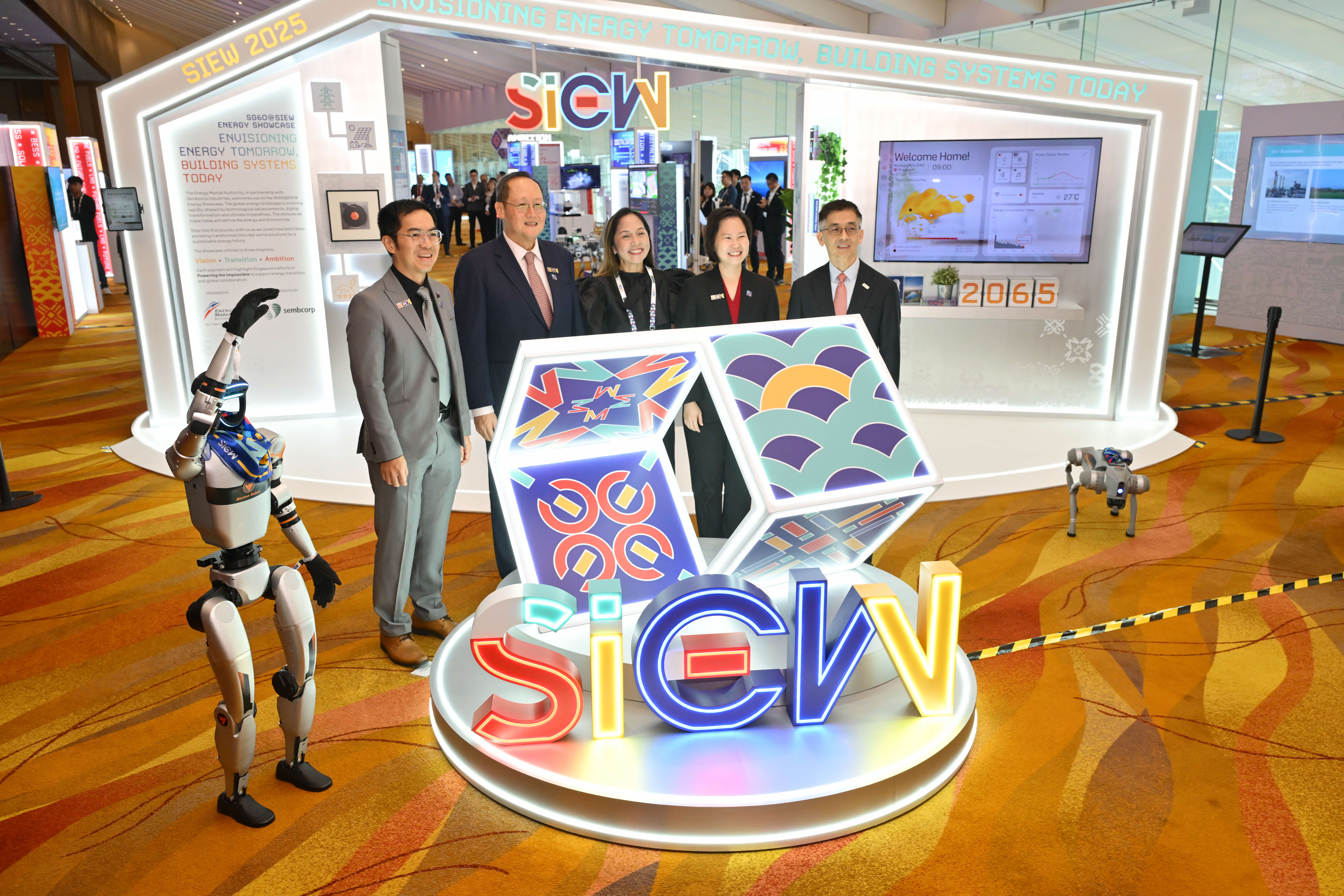
Stay tuned as the conversation evolves throughout the day. Follow @SIEW_sg on Telegram and X (formerly Twitter) for key insights and the latest updates.
Welcome to Day 1 of SIEW 2025!
Today marks the start of the Singapore International Energy Week (SIEW) 2025, bringing together industry leaders, policymakers, and experts under this year’s theme, "Envisioning Energy Tomorrow, Building Systems Today".
The day opens with Welcome Remarks from Puah Kok Keong, Chief Executive. Energy Market Authority (EMA), setting the stage for the Singapore Energy Lecture at 9:20am. This year's address will be delivered by H.E. Dr Tan See Leng, Singapore’s Minister for Manpower and Minister in Charge of Energy, Science & Technology, Ministry of Trade and Industry.
As the SIEW Summit unfolds, the SIEW Ministerial Dialogue will examine approaches to build secure, resilient, and people-centred energy systems through enhanced regional integration and cross-border power trade. The dialogue will feature H.E. Sharon S. Garin of the Philippines, Hon Stephen Dawson MLC of Australia, and Francesco La Camera, Director-General, International Renewable Energy Agency (IRENA).
Other highlights of the morning include the Keynote Address by H.E. Chris Wright, Secretary of Energy and Vice-Chair of the National Energy Dominance Council, United States of America, and a presentation by Dr Fatih Birol, Executive Director of the International Energy Agency (IEA).
Stay tuned as the conversation evolves throughout the day. Follow @SIEW_sg on Telegram and X (formerly Twitter) for key insights and the latest updates.